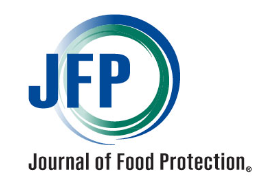Scientists from China created a fast and sensitive RNA targeting amplification and detection system for Cronobacter spp., including enrichment, RNA isolation, and detection by real-time RNA isothermal amplification, capable of detecting viable Cronobacter spp. in powdered infant formula (PIF) and other food products.. The work was published in J. Food Protection Vol 88, 21 July 2025, and is entitled “Development of a test for the real-time fluorescence RNA targeted isothermal amplification to quickly identify Cronobacter Species in Powdered Infant formula”. Total RNA was extracted to optimize Simultaneous Amplification and Testing (SAT) reaction conditions, including concentrations of primers, molecular beacon, Mg2+, dNTP, and NTP. The optimized SAT assay targeting 16s/23s rRNA was used to demonstrate the specificity and sensitivity of the detection assay. Seven Cronobacter sakazakii strains and 24 control strains were examined in comparison to real-time PCR and ISO 22964. The SAT assay showed sensitivity with a detection limit of 2 log10 CFU/ml without pre-enrichment, 2 log CFU/10 ml with 4 h enrichment, and 2 log CFU/1,000 ml with 7 h pre-enrichment (The sensitivity of real-time PCR are 3 log CFU/ml without pre-enrichment, log CFU/ml with 4 h pre-enrichment, and 2 log CFU/10 ml with 8 h pre-enrichment) The assay could provide results in 4 h including enrichment, which has been significantly shortened compare with real−time PCR method with overnight enrichment. The SAT assay did not give false positive results when detecting dead C. sakazakii (7-2 log CFU/ml). In contrast, the real-time PCR assay exhibited a detection limit equivalent to that for detecting viable bacteria. The developed SAT assay, combined with enrichment, provides a rapid, sensitive, and simple approach and has excellent potential in the detection of Cronobacter species in baby formula and other food goods. @ https://www.sciencedirect.com/science/article/pii/S0362028X25001061

